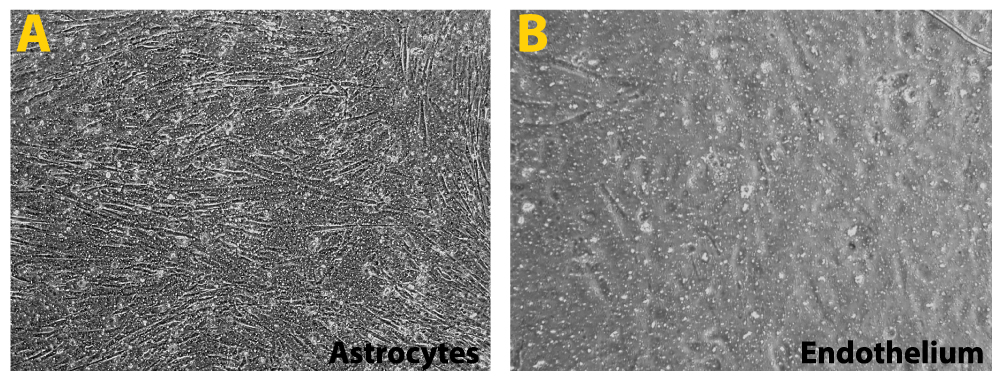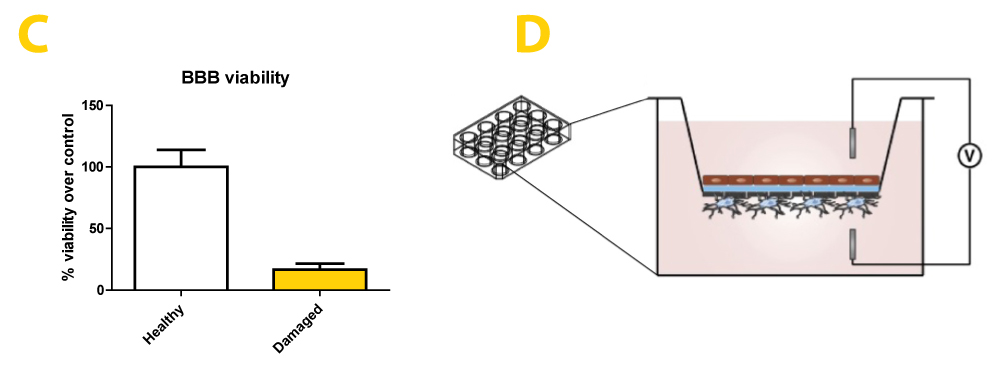Blood Brain Barrier
The Blood-Brain Barrier (BBB) is a highly selective permeability barrier that separates the circulating blood from the brain extracellular fluid in the central nervous system (CNS).
The BBB allows the passage of water, some gases, and lipid soluble molecules by passive diffusion, as well as the selective transport of molecules such as glucose and amino acids that are crucial to neural function.
The BBB is the gateway to the CNS: all drugs targeting the brain must pass through it. BBB alterations are also proper of several neurodegenerative diseases as ALS. Moreover, chronic inflammatory states, as those typically occurring in aging diseases, lead to tissue degeneration and membrane permeability, thus favouring immune cell crosstalk within the central nervous system. This crosstalk is crucial in the onset of neuroinflammatory events which characterize the early steps of neuronal degeneration.
BBB IN VITRO MODEL AT A GLANCE
a brief review of our platform
Pathology Model
The BBB is structured as an outer layer of vascular endothelial cells, communicating with the blood flow, and an inner layer of astrocytes, in communication with the CNS (A).
Our in vitro human BBB model is composed of an upper layer of human vascular endothelial cells (HMVEC) and a lower layer of human astrocytes (NHA), separated by a permeable support (B).

Readouts
The following morphological, biochemical and functional parameters can be quantitatively assayed:
- Viability: MTT, CCK8 assay (C)
- Morphology: Brightfield imaging
- Cytoarchitecture: Immunofluorescence
- Barrier integrity:
- Dextran permeability
- TEER (Electrical resistance) (D)
- Transcriptional activity

